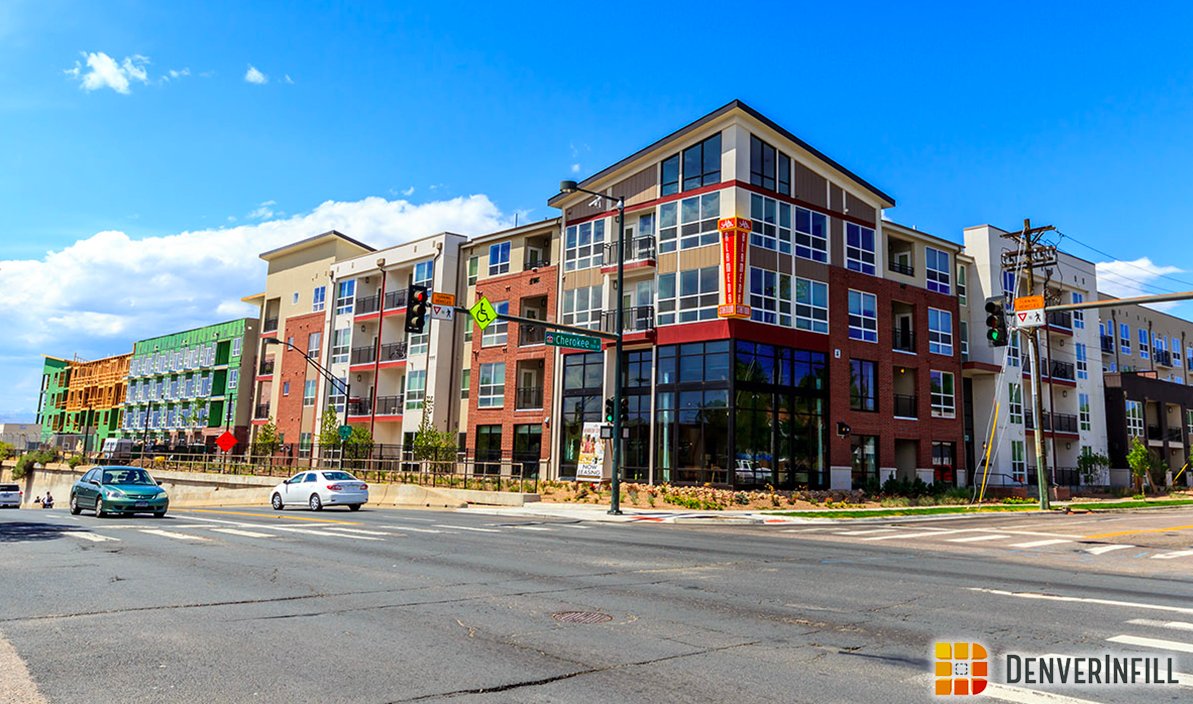What happens when you build housing around transit, but it's not affordable to the people who ride transit the most?
Denver is finding out, as parcels near new light rail stations fill out with development. An estimated 29 percent of new housing in the region is within half a mile of rail stations, report Eleni Bardaka and John Hersey in a guest post for TransitCenter, but that doesn't mean the people living in those homes are riding transit very much.
Bardaka, an assistant professor at North Carolina State University, and Hersey, a TOD planner at the Denver Regional Transit District, surveyed more than 300 people who live within a 10-minute walk of Denver's new light rail stations. Comparing residents of new market-rate housing to low-income households, they found wildly different travel habits.
More than 90 percent of the market-rate households owned at least one car, while less than half of the low-income households did. And almost 70 percent of market-rate housing residents used a personal car for most of their trips, while 66 percent of low-income households primarily used transit.
If transit expansion isn't accompanied by affordable housing policies, they conclude, it's going to fail:
Without equitable planning and policies in place, major transit investment can generate new demand for development in areas that quickly transition from economic afterthoughts to high-end enclaves of housing, retail, and offices catering to higher-income earners while leaving behind low-income households who could most benefit from improved transit access. Transit agencies may then find themselves the victims of their own expansion, setting in motion a speculative real estate market that delivers high-rent land uses but few new transit riders.
Denver isn't unique. Economic displacement has been identified as a factor in declining transit ridership in Portland, in a pattern that's suspected to apply in other cities with rising costs of living.
Funding to subsidize low-income housing isn't easy to come by, but Denver has been using a number of different financing tools to provide equitable transit-oriented development (eTOD is the shorthand). Complementary policies like reducing parking requirements also help, Bardaka and Hersey write:
Identifying financing gaps inherent to eTOD, Enterprise Community Loan Fund partnered with a number of other public- and private-sector investors to create the Denver Regional TOD Fund. One investor, the Colorado Housing Finance Authority (CHFA), has tailored its low income housing tax credit (LIHTC) program to benefit eTOD projects, while another, the City and County of Denver (CCD), has contributed considerable resources to create or preserve affordable housing in station areas, has reduced parking requirements in station areas, and promotes complementary transportation demand management principles in project development.
Using a combination of those methods, Denver was able to deliver 65 new homes at its 38th & Blake Station affordable for households making 30 percent of area median income.






